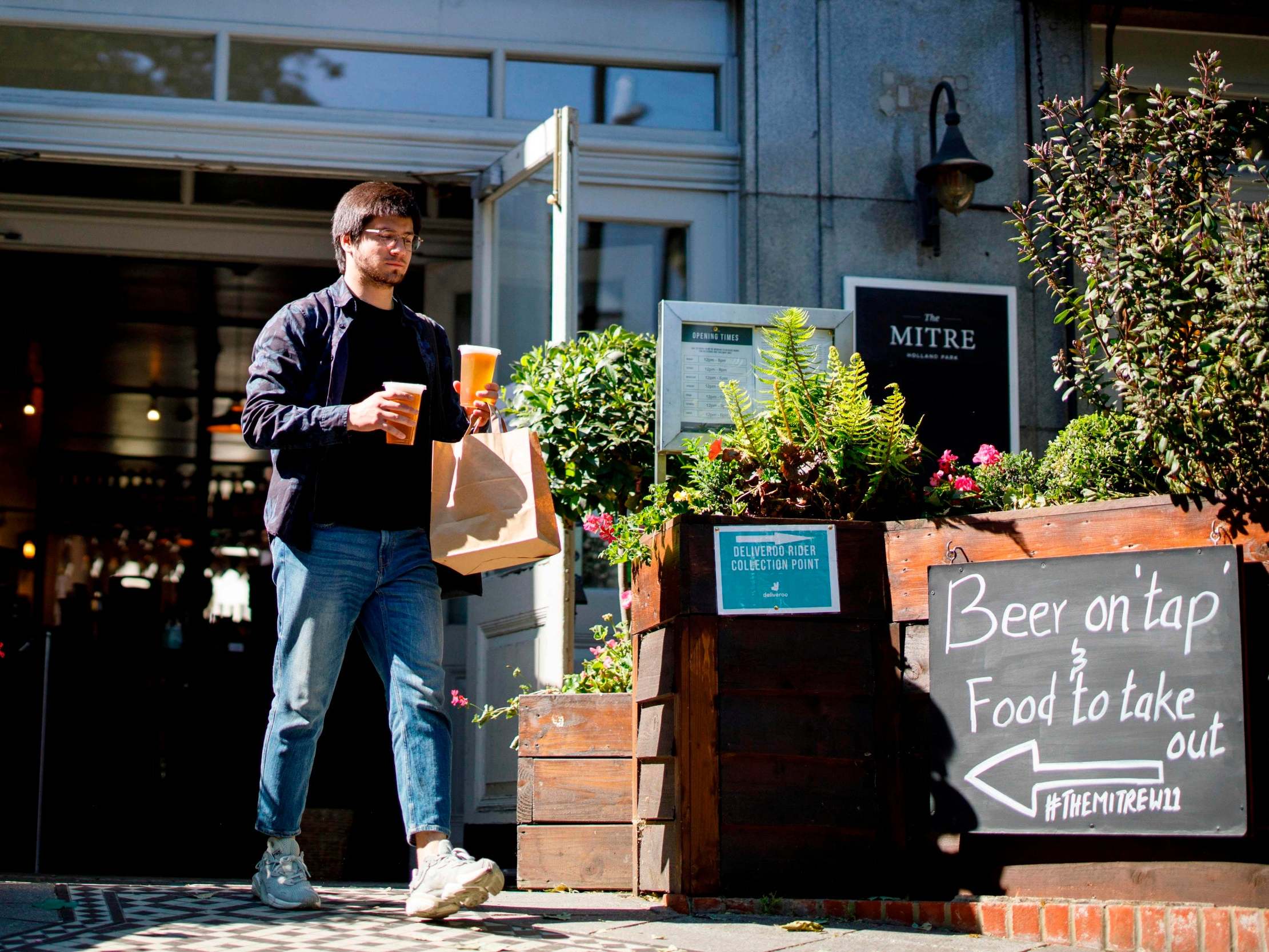
Boris Johnson has given his strongest hint yet that the UK’s two-metre social distancing rule could be relaxed in time for the planned 4 July reopening of pubs and restaurants, telling anxious businesses: “Watch this space, because we absolutely hear you.”
Speaking at the daily Downing Street coronavirus briefing, Mr Johnson acknowledged that the virus was not yet beaten but insisted that the UK has now “turned the tide”.
He said that the identification by British scientists of a treatment for the novel disease provided “the first chink of light” in the battle to overcome coronavirus.
Download the new Independent Premium app
Sharing the full story, not just the headlines
Mr Johnson admitted he was coming under intense pressure to reduce the two-metre minimum distancing currently required in the UK, telling the briefing he was asked about it “the whole time”.
The PM is understood to have been lobbied not only by business but also by several cabinet ministers to give struggling companies a chance to restore their battered finances over the peak summer season, while medical and scientific advisers caution him not to take rash moves which could spark a fresh spike in infections.
Trade body UK Hospitality has warned that the two-metre rule would risk huge numbers of jobs by cutting revenues in pubs and restaurants to an unsustainable 30 per cent of normal levels, while one metre would bring takings up to 70 per cent of the norm, allowing them to break even.
And in the House of Commons, Tory backbencher Sir Desmond Swayne urged the PM to cut the requirement, warning that the current measure “resembles a stunt by 1984’s Junior Anti-Sex League” and telling him: “Surely a yard is more than enough.”
Responding to Mr Swayne, Mr Johnson said he was “determined to make life as easy as possible for our retailers, for our hospitality industry” but added: “We must make sure that we get the virus fully under control before we make the change that he wants.”
But speaking later in Downing Street, he gave a clear hint that the rule could be eased soon if the level of infections in the country continues to decline, promising that he will “say more” about relaxing social distancing rules before 4 July.
While the evidence remains that a two-metre gap is “more effective” in preventing spread, Mr Johnson suggested that this would become less relevant as the prevalence of the disease in the community declines.
The latest news on Brexit, politics and beyond direct to your inbox
“It’s my view, and I think an increasingly widespread view, that as we get the numbers down and get the rate of infection down in the country, then the statistical likelihood of any of us actually being next to somebody with coronavirus – whether from two metres or one metre or whatever distance – is going down the whole time,” said the PM.
He added: “We are keeping it under constant review and as we depress the numbers, as we reduce the incidence I think we’ll also have a strong case for reviewing those measures as well.
“And I hope to be able to do that. I’m afraid to say we can’t do it yet – we need to continue to make progress.”
Mr Johnson said: “We’re getting there … I know people are very, very patient about this, we’re making as much progress on that as we can. Watch this space, because we absolutely hear you.”
Twelve weeks after saying that the UK would send coronavirus packing within 12 weeks, the PM said that the actions of the British people had saved tens of thousands of lives and he believed that now “we are coming through it”.
He told the press conference: “We have turned the tide on it, we haven’t yet finally defeated it. That’s the reality we face, but I think people are absolutely resolved to beat it and I can assure you that we will.”
Chief scientific adviser Sir Patrick Vallance, who is understood to be one of the officials continuing to prefer the two-metre rule, made clear that the decision on a change was a judgement call for politicians.
“Two metres is safer than one metre, but it’s not an absolute, it’s a relative and obviously the closer you get the riskier it is, so it’s a risk assessment.”
He said other steps to reduce risk include being side-by-side, back-to-back, in a good ventilated space and wearing face coverings.
Sir Patrick added: “There are times in which this can be changed and that evidence of course can then be the basis of a policy decision on what the right distance is that should be mandated or put forward as the rule to follow.
“I don’t think two metres is some sort of absolute cut-off that never changes.”
With the Office for National Statistics currently estimated that around six out of 10,000 people in the UK have coronavirus, “you can see the probability gets quite low and therefore you can start to think about ways you can manage the distance in certain circumstances”, said Sir Patrick.



